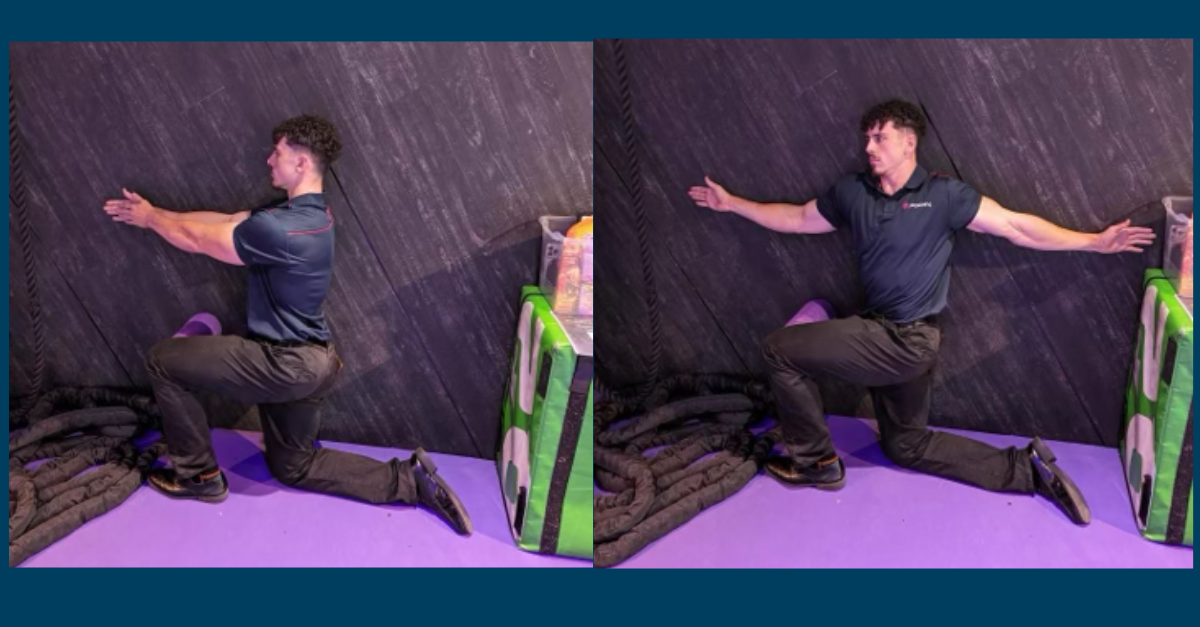Unleashing Thoracic Spine Mobility: Maximising Bodybuilding Gains
Tuesday, March 26, 2024
In the dynamic realm of bodybuilding, where every rep, set, and angle counts toward sculpting the perfect physique, the quest for optimal mobility often takes centre stage. While bulging biceps, chiselled abs, and tree-trunk legs may steal the spotlight, the often-overlooked thoracic spine holds the key to unlocking unparalleled performance and gains. In this comprehensive exploration, we delve into the significance of thoracic spine mobility in bodybuilding, its impact on muscle development, injury prevention, and strategies to optimise its flexibility for maximum results.
Understanding the Thoracic Spine: The Backbone of Stability and Mobility
The thoracic spine, encompassing the middle and upper back region, is a critical component of the skeletal system. Consisting of twelve vertebrae, it serves as a bridge connecting the cervical spine (neck) and the lumbar spine (lower back). Unlike the lumbar spine, which prioritises stability, and the cervical spine, which emphasises mobility, the thoracic spine strikes a delicate balance between the two, offering both stability and flexibility.
- Stability:
The thoracic spine provides structural support for the rib cage, protecting vital organs such as the heart and lungs. Its stability is essential for maintaining proper posture, especially during heavy lifting exercises common in bodybuilding routines. - Mobility:
Despite its stability-focused role, the thoracic spine also facilitates movement, allowing for rotation, flexion, and extension. Optimal mobility in this region enhances the execution of various exercises, ensuring full range of motion and muscle engagement.
The Role of Thoracic Spine Mobility in Bodybuilding
In the pursuit of sculpting a symmetrical, well-developed physique, bodybuilders often prioritise muscle hypertrophy through intense resistance training. However, neglecting thoracic spine mobility can impede progress and compromise overall performance in several ways:
- Muscle Activation:
A limited range of motion in the thoracic spine can inhibit proper muscle activation during exercises targeting the chest, shoulders, and upper back. Restricted mobility may result in compensatory movements, leading to imbalances and decreased effectiveness of workouts. - Postural Alignment:
Poor thoracic spine mobility contributes to postural deviations such as rounded shoulders, forward head posture, and kyphosis (excessive curvature of the upper back). These structural misalignments not only detract from aesthetic appeal but also increase the risk of injury and reduce functional efficiency. - Exercise Performance:
Many compound movements integral to bodybuilding, such as squats, deadlifts, bench presses, and overhead presses, rely on thoracic spine mobility for proper form and technique. Limited mobility in this area can hinder performance, limit weightlifting capacity, and elevate the risk of strain or injury.
Strategies for Enhancing Thoracic Spine Mobility
Given its pivotal role in bodybuilding success, prioritising thoracic spine mobility is essential for maximising gains and minimising the likelihood of setbacks. Incorporating targeted exercises, stretches, and mobility drills into your training regimen can yield significant improvements over time:
Strategy 1: Thoracic Extensions:
Perform thoracic extension exercises to reverse the effects of prolonged sitting and slouching, common in modern sedentary lifestyles. Examples include prone thoracic extensions on a foam roller, seated thoracic extensions using a resistance band, and thoracic spine mobilisation with a stability ball.
Strategy 2: Foam Rolling:
Utilise foam rolling techniques to release tension and improve tissue quality in the thoracic spine and surrounding musculature. Roll slowly along the length of the spine, focusing on areas of tightness or discomfort. Additionally, incorporate foam rolling for adjacent muscle groups such as the lats, traps, and rhomboids to further enhance mobility.
Strategy 3: Rotational Stretches:
Incorporate rotational stretches to increase thoracic spine mobility and promote flexibility in the surrounding muscles. Perform exercises such as the seated thoracic rotation stretch, standing trunk rotations with a resistance band, and thoracic spine twists on a stability ball. Aim to maintain proper alignment and avoid compensatory movements from the lumbar spine.
See the below image of me performing one of my favourite thoracic spine mobility exercises where I use the wall as a cue to rotate around and a foam roller wedged between my leg and the wall to avoid compensation.

Strategy 4: Dynamic Warm-Up:
Prioritise a comprehensive dynamic warm-up routine before engaging in resistance training sessions. Include exercises that target thoracic spine mobility, such as arm circles, shoulder dislocations, cat-cow stretches, and torso twists. Gradually increase the intensity and range of motion to prepare the body for more demanding exercises.
Strategy 5. Integrated Mobility Work:
Integrate thoracic spine mobility drills into your workouts by incorporating them between sets or as part of supersets. By embedding mobility work within your training routine, you can address limitations in real-time while enhancing recovery and overall performance.
The Benefits of Enhanced Thoracic Spine Mobility
Committing to a regimen focused on improving thoracic spine mobility offers many benefits for bodybuilders, ranging from enhanced performance to reduced injury risk and improved aesthetic appeal:
1. Improved Muscle Activation: Enhancing thoracic spine mobility ensures optimal muscle engagement during exercises, allowing for greater recruitment of the chest, shoulders, and upper back muscles. This improved activation promotes balanced muscle development and facilitates gains in strength and size.
2. Enhanced Exercise Performance: With increased thoracic spine mobility comes improved biomechanics and movement efficiency, translating to enhanced exercise performance. By maintaining proper form and alignment, bodybuilders can lift heavier weights with greater control and precision, accelerating progress toward their fitness goals.
3. Injury Prevention: Addressing limitations in thoracic spine mobility reduces the likelihood of overuse injuries, strains, and imbalances that commonly afflict bodybuilders. By fostering balanced muscle development and optimal movement patterns, individuals can mitigate the risk of acute and chronic injuries, prolonging their training longevity.
4. Postural Correction: Optimal thoracic spine mobility promotes postural alignment, counteracting the effects of prolonged sitting and poor ergonomics. By addressing postural deviations such as kyphosis and forward head posture, bodybuilders can project confidence, poise, and aesthetic symmetry on and off the stage.
In the multifaceted world of bodybuilding, where every detail contributes to the pursuit of perfection, the significance of thoracic spine mobility cannot be overstated. By prioritising flexibility, stability, and alignment in this crucial region, individuals can unlock untapped potential, optimise performance, and safeguard against injury.
Whether you're a seasoned competitor striving for the stage, or a dedicated enthusiast committed to personal growth, integrating thoracic spine mobility strategies into your training regimen is a game-changer. Embrace the journey of self-improvement, prioritise mobility, and unleash your full potential as you sculpt the physique of your dreams—one rep, one stretch, and one pose at a time.

